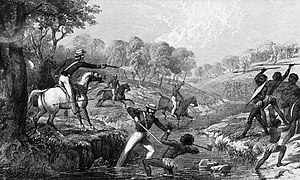IND/Over-representation in Custody and the History of Colonisation
The Royal Commission found that Aboriginal people have been severely disadvantaged under the Australian legal system since 1788 and that a direct link exists between the contemporary over-representation of Aboriginal people in custody and the application of British law to the Australian continent and its Indigenous peoples.
As the Royal Commission suggests, “[t]he policeman was the right hand man of the authorities, the enforcer of the policies of control and supervision, often the taker of children, the rounder up of those accused of violating the rights of settlers” (Johnston, 1991, Volume 1, 10). Further, as the Commission suggests, the activities that “brought [police] into continuous and hostile conflict with Aboriginal people” in the past reverberate in the present in the form of negative Aboriginal-police relations, the over-representation of Aboriginal people in custody and over-policing of Aboriginal communities (Johnston, 1991, Volume 1, 10).
Hogg (2001) suggests that it is not just the overt violence of the frontier period but also the segregation of Indigenous people onto reserves and missions, and the measures of control that Indigenous people were subjected to, as well as the surveillance and control outside of these reserves, which creates the climate for contemporary relations between Indigenous people and the criminal justice system (pp. 361-364).
